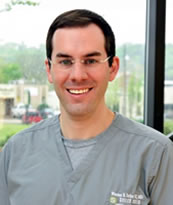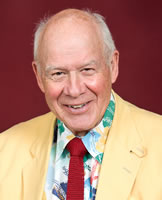Introduction
The primary Objective of the Berkeley lower Extremity Exoskeleton (BLEEX) Project at the University of California, Berkeley is to develop fundamental technologies associated with the design and control of energetically autonomous lower extremity exoskeletons that augment human strength and endurance during locomotion. The first field-operational lower extremity exoskeleton is comprised of two powered anthropomorphic legs, a power unit, and a backpack-like frame on which a variety of heavy loads can be mounted. This system provides its pilot (i.e., the wearer) the ability to carry significant loads on his/her back with minimal effort over any type of terrain. BLEEX allows the pilot to comfortably squat, bend, swing from side to side, twist, and walk on ascending and descending slopes, while al so offering the ability to step over and under obstructions while carrying equipment and supplies. Because the pilot can carry significant loads for extended periods of time without reducing his/her agility, physical effectiveness increases significantly with the aid of this class of lower extremity exoskeletons. In order to address issues of field robustness and reliability, BLEEX is designed such that, in the case of power loss (e.g. from fuel exhaustion) the exoskeleton legs can be easily removed and the remainder of the device can be carried like a standard backpack.
BLEEX was first unveiled in 2004, at the University of California, Berkeley's Human Engineering and Robotics Laboratory (Fig, I) [l- 3]. In this initial model, BLEEX offered a carrying capacity of 34 kg (75 lb). with weight in excess of that allowance being supported by the pilot. BLEEX's unique design offers an ergonomic. highly maneuverable, mechanically robust, lightweight, and durable outfit to surpass typical human limitations. BLEEX has numerous potential applications; it can provide soldiers, disaster-relief workers, wildfire fighters, and other emergency personnel the ability to carry heavy loads, such as food, rescue equipment, first-aid supplies, communications gear, and weaponry, without the strain typically associated with demanding labor. It is our vision that BLEEX will provide a versatile and reliable transport platform for mission-critical equipment.
The capability of the lower extremity exoskeleton stems from the combined benefit of the human intellect provided by the pilot and the strength advantage offered by the exoskeleton; in other words, the human provides an intelligent control system for the exoskeleton while the exoskeleton actuators provide most of the strength necessary for walking. The control algorithm ensures that the exoskeleton moves in concert with the pilot with minimal interaction force between the two. The control scheme needs no direct measurements from the pilot or the human-machine interface (e.g., no force sensors between the two); instead, the controller estimates, based on measurements from the exoskeleton only, how to move so that the pi lot feels very little force. This control scheme which has never before been applied to any robotic system, is an effective method of generating locomotion when the contact location between the pilot and the exoskeleton is unknown and unpredictable (i.e., the exoskeleton and the pilot are in contact in a variety of places). This control method differs from compliance control methods employed for upper extremity exoskeletons [4- 6] and haptic systems [7,8] because it requires no force sensor between the wearer and the exoskeleton.
The basic principle for the control of BLEEX rests on the notion that the exoskeleton needs to shadow the wearer's Voluntary and involuntary movements quickly, and without delay. This requires a high level of sensitivity in response to all forces and torques on the exoskeleton, particularly, the forces imposed by the pi lot. Addressing this need involves a direct conflict with control science's goal of minimizing system sensitivity in the design of a closed-loop feedback system, If fitted with a low sensitivity, the exoskeleton would not move in concert with its wearer. We realize, however. that maximizing system sensitivity to external forces and torques leads to a loss of robustness in the system.
Taking into account this new approach, our goal was to develop a control system for BLEEX with high sensitivity. We were faced with two realistic concerns; the first was that an exoskeleton with high sensitivity to external forces and torques would respond to other external forces not initiated by its pilot. For example, if someone pushed against an exoskeleton that had high sensitivity, the exoskeleton would move the same way it would move in response to the forces from its pi lot. Although the fact that it does not stabilize its behavior on its own in response to other forces may sound like a serious problem; if it did (e.g., using a gyro), the pilot would receive motion from the exoskeleton unexpectedly and would have to struggle with it to avoid unwanted movement. The key to stabilizing the exoskeleton and preventing it from failing in response to external forces depends on the pilot's ability to move quickly (e.g. ., step back or sideways) to create a stable situation for himself and the exoskeleton. For this, a sufficiently wide control bandwidth is needed so the exoskeleton can respond to both pilot's voluntary and involuntary movements (i .e., reflexes).
The second concern is that systems with high sensitivity to external forces and torques are not robust to variations, and therefore, the precision of the system performance will be proportional to the precision of the exoskeleton dynamic model. Al though this is a serious drawback. we have accepted it as unavoidable. Nevertheless, various experimental systems in our laboratory have proved the overall effectiveness of the control method in shadowing the pilot's movement.
Previous Work
In the early 1960s, the U.S. Defense Department expressed interest in the development of a man-amplifier, a "powered suit of armor" that would augment soldiers' lifting and carrying capabilities. In 1962, the U.S. Air Force had the Cornell Aeronautical Laboratory study the feasibility of using a master-s lave robotic system as a man-amplifier. In later work, Cornell determined that an exoskeleton-an external structure in the shape of the human body that has far fewer degrees of freedom than a human---could accomplish most desired tasks [9]. From 1960 to 197 1, General Electric developed and tested a prototype man-amplifier, a master-slave system, called the Hardiman [10-13]' The Hardiman was a set of overlapping exoskeletons worn by a human operator. The outer exoskeleton (the slave) followed the motions of the inner exoskeleton (the master), which followed the motions of the human operator. These studies found that duplicating all human motions and using master-slave systems were not practical Additionally, difficulties in human sensing and system complexity kept it from walking.
Several exoskeletons were developed at the University of Belgrade in the 1960s and 1970s to aid people with paraplegia resulting from spinal cord injury [14, 15]' Although these early devices were limited to predefined motions and had limited success, balancing algorithms developed for them are still used in many bipedal robots [16], Current commercially available rehabilitation devices, such as the "Locomat," use a similar predefined motion strategy to train muscles and nerve pathways for patients with locomotion impairment [17]. The "RoboKnee" is a powered knee brace developed by MIT that functions in parallel to the wearer's knee and transfers load to the wearer's ankle (not to the ground) l 18]. "HAL" is an orthosis developed by the University of Tsukuba in Japan that is connected to the patient's thighs and shanks and moves the patient's legs as a function of the EMG signals measured from the wearer [19,20]'
In our research work at Berkeley, we have separated the technology associated with human power augmentation into lower extremity exoskeletons and upper extremity exoskeletons. The reason for this was twofold; first, we could envision a great many applications for either a stand-alone lower or upper extremity exoskeleton in the immediate future. Second, and more importantly for the division, is that the exoskeletons are in their early stages. and further research still needs to be conducted to ensure that the upper and lower extremity exoskeletons can function well, independently, before we can venture an attempt to integrate them. With this in mind, we proceeded with the designs of the lower and upper extremity exoskeletons separately, with little concern for the development of an integrated exoskeleton. We will first give a summary of the upper extremity exoskeleton efforts at Berkeley and then will proceed with the description of the BLEEX project.
In the mid- 1980s, we initiated several research projects on upper extremity exoskeleton systems, so-called human extenders 14,5,21]' The main function of an upper extremity exoskeleton is human power augmentation for manipulation of heavy and bulky objects. These systems. which are also known as assist devices or human power extenders, can simulate forces on a worker's arms and torso. These forces differ from and are usually much less than the forces needed to maneuver a load. When a worker uses an upper extremity exoskeleton to move a load, the device hears the bulk of the weight by itself, while Transferring to the user as a natural feedback, a scaled-down value of the load's actual weight. For example, for a 20 kg (44 Ib) object, a worker might support only 2 kg (4.4 lb) while the device supports the remaining 18 kg (39.6 Ib). In this fashion, the worker can still sense the load's weight and judge his/her movements accordingly, but the force he/she reels is much smaller than what he/she would feel without the device. In another example, suppose the worker uses the device to maneuver a large. rigid, and bulky object, such as an exhaust pipe in an automotive assembly line. The device will convey the force to the worker as if it was a light, single- point mass. This limits the cross-coupled and centrifugal forces that increase the difficulty of maneuvering a rigid body and can sometimes produce injurious forces on the wrist. In a third example, suppose a worker uses the device to handle a powered torque wrench. The device will decrease and filter the forces transferred from the wrench to the worker's hand so the worker feels the low-frequency components of the wrench's vibratory forces instead of the high frequency components that produce fatigue.
The Berkeley lower extremity exoskeleton (BLEEX) is not an orthosis or a brace; unlike the above systems, it is designed to carry a heavy load by transferring the load weight to the ground (not to the wearer). ELFEX has four new features. First, a novel control architecture was developed that controls the exoskeleton through measurements of the exoskeleton itself [2]. This eliminated problematic human-induced instability due to sensing the human force [8]. Second, a series of high specific-power and specific-energy power supplies were developed that were small enough to make BLEEX a true field-operational system [22-24]. Third, a body LAN (local area network) with a special communication protocol and hardware was developed to simplify and reduce the cabling task for the sensors and actuators needed for exoskeleton control [25,26]' Finally, a flexible and versatile mechanical architecture was chosen to decrease complexity and power consumption [3]. This paper focuses on the control architecture and gives an overview of the electronic design and the biomimetic mechanical design of the exoskeleton. For further depth in each of these four areas, the reader is referred to the publications referenced above.
Controller Description
. . .Continue to read rest of article (PDF).
Dr. Homayoon Kazerooni is one of the world's leading experts in Robotics Human Augmentation and has over 30 years of Mechanical Engineering experience. He holds a Doctorate in Mechanical Engineering from MIT. Dr. Kazerooni is a Professor in the Mechanical Engineering Department at the University of California, Berkeley, and is the director of the Berkeley Robotics and Human Engineering Laboratory, affectionately known as "KAZ LAB".
©Copyright - All Rights Reserved
DO NOT REPRODUCE WITHOUT WRITTEN PERMISSION BY AUTHOR.











